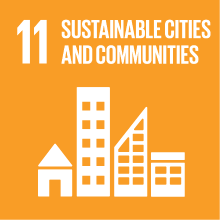ROMAN ARCHITECTURE AND URBAN PLANNING
- Academic year
- 2020/2021 Syllabus of previous years
- Official course title
- ARCHITETTURA E URBANISTICA DEL MONDO ROMANO
- Course code
- FT0520 (AF:319033 AR:177988)
- Teaching language
- Italian
- Modality
- On campus classes
- ECTS credits
- 6
- Degree level
- Bachelor's Degree Programme
- Academic Discipline
- L-ANT/07
- Period
- 4th Term
- Course year
- 2
- Moodle
- Go to Moodle page
Contribution of the course to the overall degree programme goals
Expected learning outcomes
● Knowleadge of the main sources of information for the study of the Roman provinces (excavation data, field survey, aerial photography, study of the findings of the material culture, study of ecofacts, written sources, iconographic testimonies etc ...).
● To know theories and methods for the study of archaeological data relevant to the course.
● To know the basic archaeological terminology in reference to the cultural sphere of the course.
● To know the fundamentals of the chronological and topographical framing of the Roman provinces.
● To know the basicsof formation and development of the province of Britainnia.
2. Ability to apply knowledge and understanding
● To know how to correctly use the archaeological reference terinology for the course
● To know how to make appropriate chronological and topographical references.
● To know how to evaluate the information potential of archaeological data and establish the most appropriate methods of analysis and elaboration in relation to specific esearch objectives.
● To be able to re-elaborate and connect appropriately the information and knowledge acquired during the course, in order to develop and illustrate simple research paths.
3. Ability to judge
● To konw how to formulate and argue on the issues pertaining to the course, also developing a critical and informed approach to evaluating alternative hypotheses.
4. Communication skills
● To know how to communicate one's own reflections starting from a concrete case study, using an appropriate terminology, also knowing how to interact in debates and moments of group discussion in the classroom.
5. Learning skills
● Be able to take notes and share them in a collaborative way also on the online platform.
● To know how to critically consult the reference texts and the bibliography contained in them.
Pre-requirements
Contents
a) General part A. Historical and topographical framework of the Empire.
b) General part B. The cities of the Empire: the design and construction of urban centers in the provinces as a tool, and symbol, of cultural and political integration.
c) General part C (but with particular reference to the province of Britannia). The role of the Roman army in the dissemination of knowledge, technologies, models of plannig, lifestyle and as a driver of economic development in the provinces. In the general part of the course, in addition to essential basic notions, the theoretical and methodological foundations necessary for the study of the archeology of the Roman Empire will be provided. In addition, students will have occasions of discussion in classroom on proposed topics and methodological approaches.
d) The province of BRITANNIA: dynamics of integration and cultural interaction at the borders of the Empire, between archaeology and written sources. Lectures will pay particular attention to the relationship between archaeological data (including those taken from aerial photos, field survey, stratigraphic excavation, analysis of finds etc.), written testimonies and iconographic sources. Emphasis will be given to the comparison between current landscape / reality and ancient landscape, highlighting with specific cases, that the signs of the past are the result of a complex set of factors (including natural factors) and human choices.
There is NOT a program for non-attending students
Referral texts
-D. COTTICA , La casa urbana in Britannia. Evoluzione, forma e significato, Trieste, 2002 (available at BAUM or on sale at the Ca 'Foscarina bookshop). Study chapters 1-4 included and read the entire volume.
Further readings will be recommended in class.
Assessment methods
Type of exam
Teaching methods
a) lectures with the aid of power point presentations;
b) interactive lectures and classroom discussion on selected topics where the students will have to discuss, analyze and report results achieved in the classroom;
c) teaching material available on the moodle.unive.it e-learning platform. to supplement the notes taken in the classroom.
Further information
2) Between January and September there will be seminars aimed at implementing the technical-practical skills, specifically aimed at building the profession of the archaeologist, enriching the preparation and competence. These are closed-ended seminars on the recognition, filing, design and computerized processing of ceramics, which include lectures accompanied by practical exercises. For pre-enrollment contact the teacher by e-mail by December 2019.
3) Between May and June 2019 an excavation is planned on the site of Aquileia Roman port - eastern shore with a limited number (http://www.unive.it/pag/32776/ ). To participate in the excavation it is necessary to have obtained the certificate of the safety course, to have a tetanus coverage and to have a medical certificate of good health. For pre-enrollment contact the teacher by e-mail by December 2019.
4) Dissertations: IN ADDITION TOPICS proposed by students, the course offers dissertations linked to the teacher's ongoing research projects and related to the archeology of production, the interaction between man and the environment in ancient times, excavations in progress at Aquileia and aspects of studies of artefacs. Also available dissertations in physical anthropology, using the data related to the study project of the necropolis of Piazza Corrubbio in Verona and the relative findings (human bones, ceramics, glass, metals).
2030 Agenda for Sustainable Development Goals
This subject deals with topics related to the macro-area "Cities, infrastructure and social capital" and contributes to the achievement of one or more goals of U. N. Agenda for Sustainable Development


